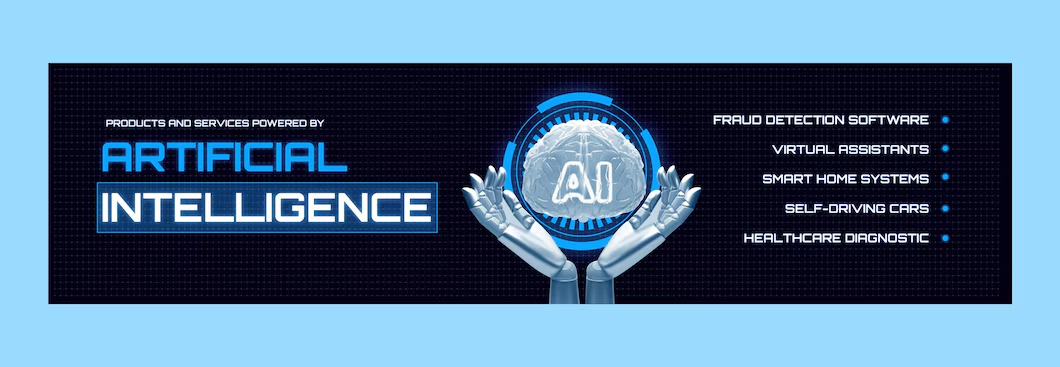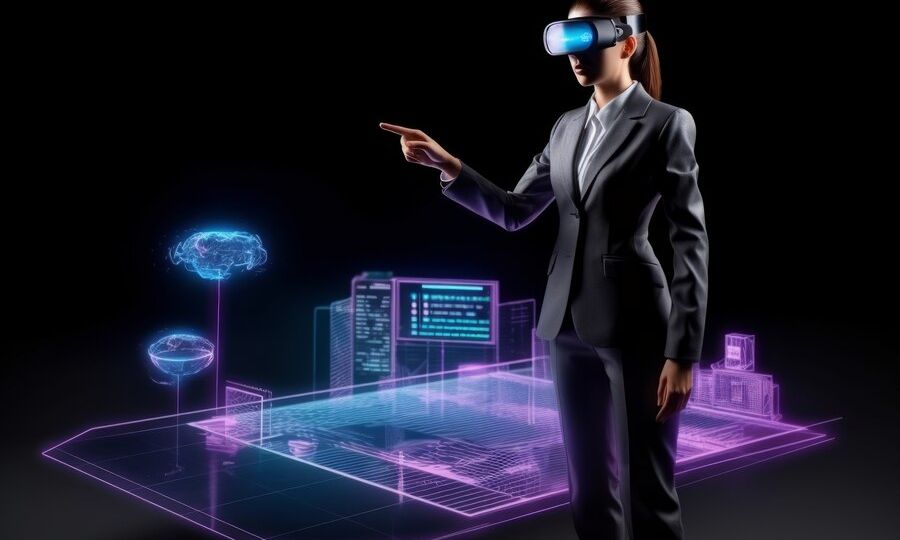Latest Technologies:
In our rapidly evolving world, keeping up with the latest technological advancements is essential. These innovations not only shape industries but also impact our everyday lives in significant ways.
1. Artificial Intelligence (AI) and Machine Learning (ML)
AI and ML are transforming many aspects of our lives, from how we work to how we interact with technology.
key Areas:
AI Applications: Think about how you use virtual assistants like Siri or Alexa, or how Netflix seems to know exactly what you want to watch next. These are all powered by AI.
ML Techniques: These include various methods like supervised learning, where a system is trained on a labeled dataset, or reinforcement learning, where it learns by trial and error.
Ethical Considerations: While AI can greatly enhance our lives, it also raises concerns about job displacement and privacy. Imagine your job being taken over by a machine, or your data being misused.
impacts:
Healthcare: AI helps doctors diagnose diseases more accurately and personalize treatment plans. Think about AI detecting cancer in its early stages through imaging.
Finance: From detecting fraud to automating customer service, AI makes financial services more efficient and secure.
Transportation: Autonomous vehicles could drastically reduce accidents caused by human error, making our roads safer.


2. Internet of Things (IoT)
IoT connects everyday devices to the internet, making our lives more convenient and efficient.
key Areas:
- Smart Homes: Imagine controlling your lights, thermostat, and security system from your smartphone.
- Industrial IoT (IIoT): Factories use IoT to monitor machinery in real-time, preventing breakdowns and optimizing production.
- Security Concerns: However, every connected device is a potential target for hackers, raising important security issues.
impacts:
- Efficiency: Real-time monitoring and automation streamline industrial processes and daily life.
- Convenience: From smart refrigerators that remind you to buy milk to smartwatches tracking your health.
- Data Utilization: The vast amount of data generated helps improve products and services, tailoring them to our needs.
3.5G Technology
5G promises faster internet speeds and more reliable connections, transforming how we connect
key Areas:
- Enhanced Mobile Broadband: Think of downloading an HD movie in seconds or streaming without buffering.
- Massive IoT: 5G supports a vast number of connected devices, crucial for smart cities and homes.
- Ultra-Reliable Low-Latency Communications (URLLC): This is essential for applications like remote surgery or real-time gaming.
impacts:
- Connectivity: Better mobile internet experience and support for more devices.
- Innovation: Enables new technologies like augmented reality (AR) and virtual reality (VR).
- Challenges: Building the necessary infrastructure and addressing health concerns related to increased exposure to radio frequencies.
4. Blockchain Technology
Blockchain offers a secure and transparent way to record transactions, beyond just cryptocurrencies.
key Areas:
- Cryptocurrencies: Bitcoin and Ethereum are the most well-known applications, but blockchain’s potential goes much further.
- Smart Contracts: These are self-executing contracts with terms directly written into code, making transactions faster and more secure.
- Beyond Finance: Blockchain can enhance supply chain transparency, secure voting systems, and protect digital identities.
impacts:
- Transparency and Security: Every transaction is recorded on a public ledger, reducing fraud.
- Efficiency: Streamlines processes in various industries, from finance to logistics.
- Decentralization: Reduces reliance on central authorities, empowering individuals.
5. Augmented Reality (AR) and Virtual Reality (VR)
AR and VR create immersive experiences that blend the digital and physical worlds.
key Areas:
- AR Applications: Imagine overlaying digital information on the real world, like Pokemon Go or IKEA’s app that shows how furniture would look in your home.
- VR Applications: VR creates entirely virtual environments for gaming, training, and virtual tourism.
- Future Trends: Mixed Reality (MR) combines elements of both AR and VR for even more immersive experiences.
impacts:
- Education: AR and VR make learning more interactive and engaging, from virtual field trips to medical training.
- Healthcare: VR is used for pain management and therapy, while AR assists in surgeries by providing real-time data.
- Entertainment: Offers new ways to experience games, movies, and concerts.
6.Quantum Computing
Quantum computing uses the principles of quantum mechanics to solve complex problems much faster than traditional computers.
key Areas:
- Quantum Bits (Qubits): Unlike traditional bits, qubits can represent both 0 and 1 simultaneously, vastly increasing computing power.
- Quantum Supremacy: Achieving tasks that classical computers cannot handle, like complex simulations.
- Applications: Cryptography, material science, and solving optimization problems in logistics and finance.
impacts:
- Cryptography: Could revolutionize data security, making current encryption methods obsolete.
- Scientific Discovery: Accelerates research in fields like chemistry and materials science.
- Optimization: Solves complex problems in areas like supply chain management more efficiently.
7. Edge Computing
Edge computing processes data closer to its source rather than relying on centralized data centers.
key Areas:
- Advantages Over Cloud Computing: Reduced latency and bandwidth usage, and enhanced data privacy.
- Applications: Essential for autonomous vehicles, smart cities, and real-time analytics.
- Challenges: Ensuring security and integrating with existing infrastructure.
impacts:
- Real-Time Processing: Critical for applications where latency is a concern, like self-driving cars.
- Cost Efficiency: Reduces data transfer costs and improves bandwidth usage.
- Scalability: Enables scalable and distributed computing environments.
8. Biotechnology
Biotechnology leverages biological systems and organisms to develop innovative products and solutions.
key Areas:
- Genetic Engineering: Technologies like CRISPR allow for precise gene editing, potentially curing genetic diseases.
- Synthetic Biology: Designing new organisms for specific tasks, like producing biofuels.
- Medical Advancements: Personalized medicine and regenerative therapies promise to revolutionize healthcare.
impacts:
- Healthcare: Advances in disease diagnosis, treatment, and prevention, including tailored therapies based on an individual’s genetic makeup.
- Agriculture: Genetically modified crops that yield more and are resistant to pests, addressing food security.
- Environmental Sustainability: Bio-based solutions for pollution and waste management.
9. Renewable Energy Technologies
Renewable energy harnesses natural resources to generate sustainable power, reducing our reliance on fossil fuels.
key Areas:
- Solar Power: Advances in solar panel efficiency and new materials.
- Wind Energy: Innovations in turbine design and offshore wind farms.
- Energy Storage: Improved battery technologies and grid storage solutions.
impacts:
- Sustainability: Reduces carbon footprint and helps combat climate change.
- Energy Security: Diversifies energy sources and enhances resilience.
- Economic Growth: Creates jobs and attracts investment in renewable energy sectors.
10. Autonomous Vehicles
Autonomous vehicles use AI, sensors, and algorithms to navigate and operate without human intervention.
key Areas:
- Levels of Automation: From driver assistance systems to fully self-driving cars.
- Technologies Involved: LIDAR, radar, computer vision, and machine learning.
- Regulatory and Ethical Issues: Addressing safety standards, liability, and ethical decision-making in unpredictable scenarios.
impacts:
- Safety: Potential to reduce accidents caused by human error, making roads safer.
- Efficiency: Optimized traffic flow and reduced congestion.
- Mobility: Improved accessibility for people unable to drive, such as the elderly and disabled.



